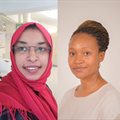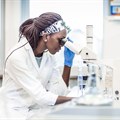Local #WomeninScience breaking barriers, adding value to scientific community
In what remains a largely male-centred industry, there are many obstacles that women in science have to overcome, including a sense of belonging, harassment and bullying, as well as being compensated differently to their male counterparts. Despite these challenges, women, like those with companies housed at The Innovation Hub, have broken down the barriers and have succeeded at creating innovations that aim to change the lives of those around them, says Advocate Pieter Holl, CEO at The Innovation Hub.
This International Day of Women and Girls in Science, celebrated annually on 11 February, The Innovation Hub is honouring two South African women, Sibongile Mongadi and Kathryn Malherbe who have broken down barriers and added tremendous value to the scientific community with innovations from their respective companies, Uku’hamba and Invisio AI.
Innovation for people with life-altering amputations
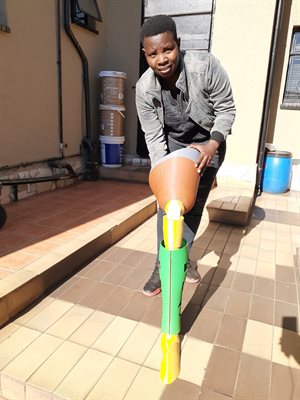
Sibongile Mongadi is an entrepreneur currently incubated at The Innovation Hubs’ eKasiLabs Soweto programme. eKasiLabs provides business development support to startups in various Gauteng townships. Mongadi's Uku’hamba focuses on improving the conditions of amputees by providing lightweight, durable, water-resistant, custom-made and low-cost prosthetics. Her invention ultimately serves to improve the living conditions of those who have had life-altering amputations.
Mongadi drew inspiration from her interactions with an amputee at a health facility in Johannesburg who had been on the waiting list for more than four years, struggling to get access to a prosthetic limb.
With currently three million amputees in South Africa, only 30% have access to prosthetic care.
“That provoked me to make a positive impact and to start producing low-cost prosthetic limbs to improve amputees’ quality life of by giving them back their independence,” says Mongadi.
Mongadi, with an educational background in marketing, entrepreneurship, innovation management and 3D printing, uses advanced technologies (3D scanner, designing software, 3D printer, a CNC milling machine and a laser engraver) along with resourceful and recyclable materials to make mobility accessible to lower- and middle-income groups, with a faster turnaround time than general prosthetics.
Breast cancer identification made easier
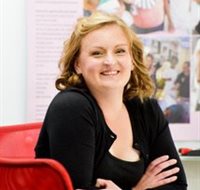
Another woman pushing the limits of science is Kathryn Malherbe. MedAI Sol is working on the development of deep machine learning (DML) and artificial intelligence (AI) software for breast cancer identification and segmentation for breast ultrasound in the diagnostic imaging sector.
Having worked in clinical practice for the past 15 years, she was inspired to understand why breast cancers are at times missed during ultrasound imaging.
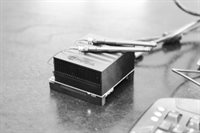
“In order to do give cancer a ‘name’, you require on-site infrastructure to do a biopsy to send to the pathologists who have to evaluate the breast tissue under the microscope to identify what type of cancer it is. Most clinics don’t have the facilities needed, and having thorough biopsies done can take up to six months for a patient to get the answer they need, delaying their standard care of practice,” says Malherbe. “Our innovation can make a real change in the high mortality rate currently associated with breast cancer in South Africa,” she adds.
Malherbe has always been a problem solver and started her journey in science 15 years ago when she did her undergraduate studies in neuroanatomy and then went on to complete her Master’s degree in Radiography and Mammography.
Overcoming inequalities in the workplace
“It is important that female scientists stick together to overcome the inequalities in the scientific workplace. The sharing of resources and networking has helped set women up for success, and we encourage women to keep doing so,” says Holl.
“Furthermore, female scientists require the support from the various sectors within their industries,” says Holl. “The Innovation Hub strives to pave the way for women to reach their goals and to make a difference for many more women in the future,” he concludes.




